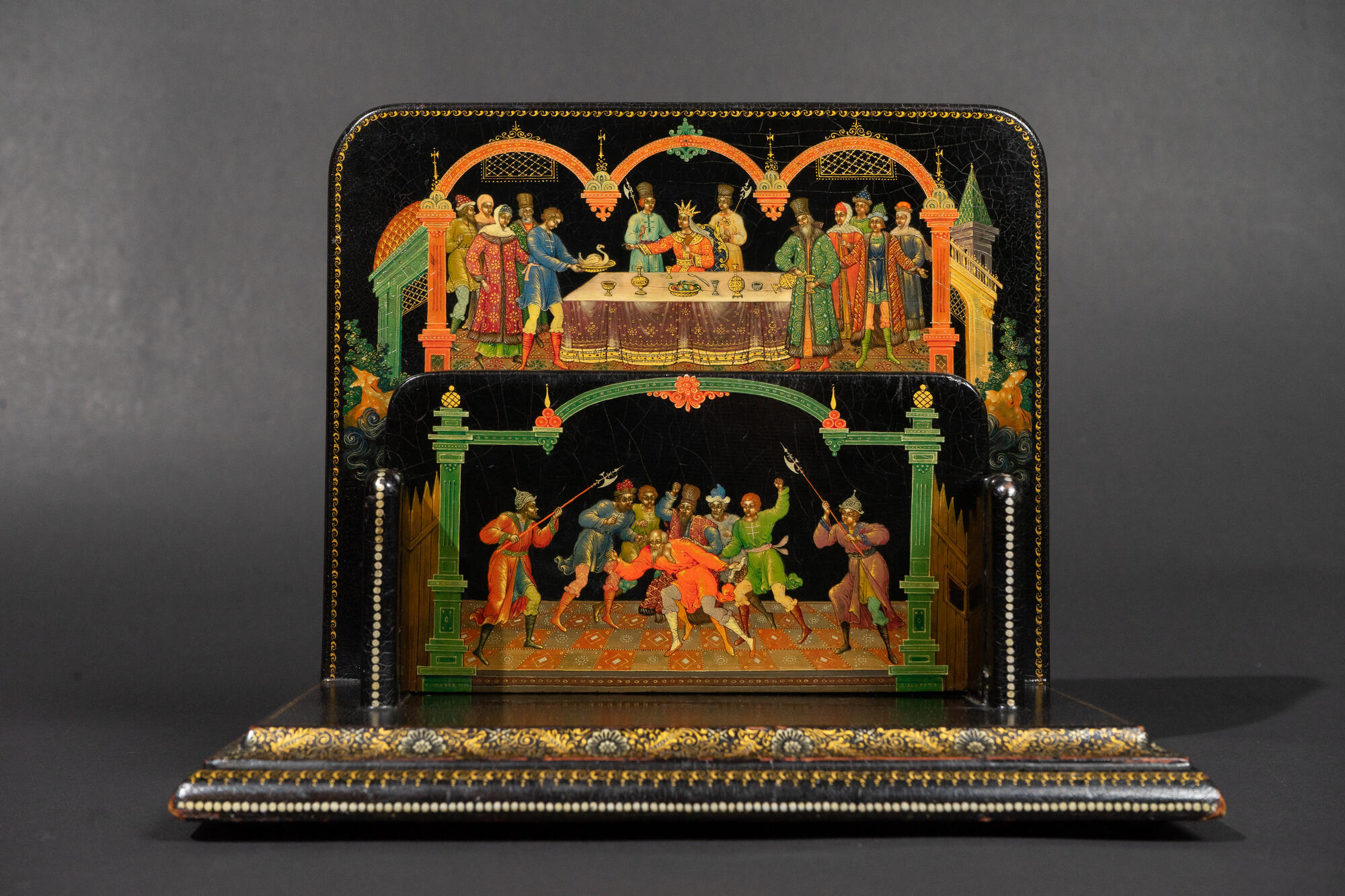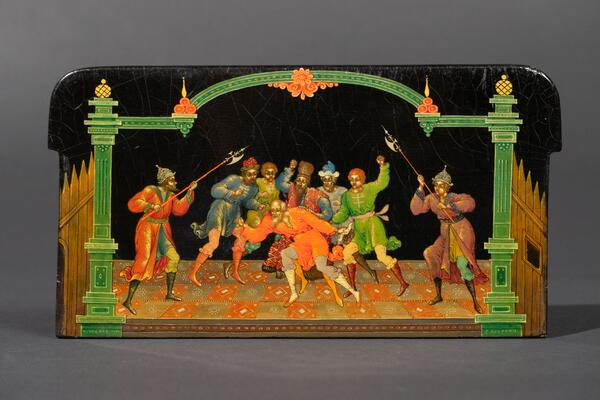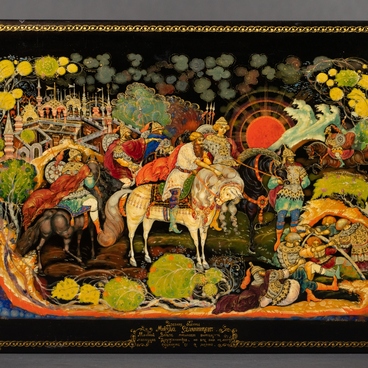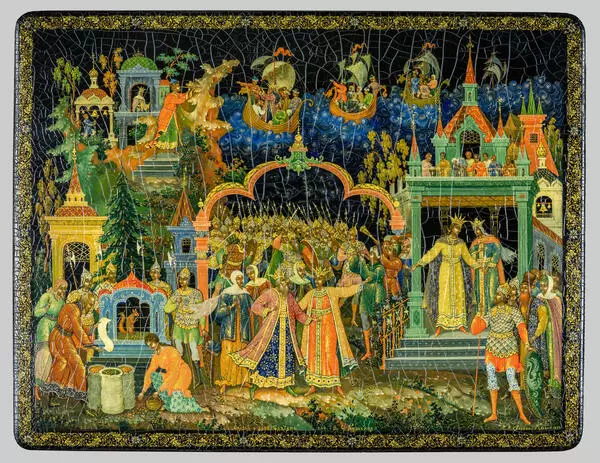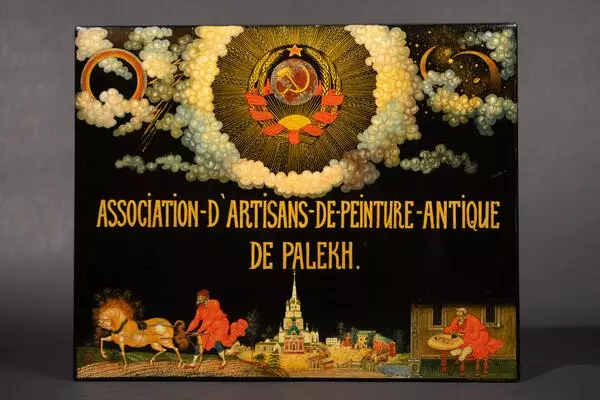In this lacquer miniature, Alexander Kotukhin depicted several scenes from Pushkin’s fairy tale “The Tale of the Fisherman and the Fish”. He chose an interestingly shaped object to paint on — a paper stand. The master painted on the back plate of the stand and two removable plates. He decorated the base of the item with a gold ornament.
A conversation of an old man with a goldfish is depicted on the front plate: the man bows to her, and the fish listens to him in the depths of the raging sea. A scene in which the old woman, who has already turned into a tsaritsa (a queen) and feasts surrounded by servants, is painted on the back plate of the stand. On the central plate, which is hidden from the viewer’s eyes, the artist depicted one of the most dramatic moments of the fairy tale.
A conversation of an old man with a goldfish is depicted on the front plate: the man bows to her, and the fish listens to him in the depths of the raging sea. A scene in which the old woman, who has already turned into a tsaritsa (a queen) and feasts surrounded by servants, is painted on the back plate of the stand. On the central plate, which is hidden from the viewer’s eyes, the artist depicted one of the most dramatic moments of the fairy tale.
